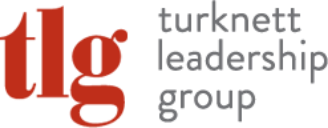
 By Lyn Turknett
By Lyn Turknett
Co-founder and Co-chair, TLG
Developing an Enterprise Leadership Mindset
I remember distinctly a conversation with a leader who had just hired two new employees, and was startled by the difference in their attitudes. One seemed competent but waited to be told what to do, while the other was already thinking strategically about how the business made money and was coming into her office with ideas. He was “thinking like an owner.” She could see that he might be more challenging to manage, but also saw that he could clearly contribute to the business – he already was building an enterprise leadership mindset.
Manika Gandhi argues in her article, Building an Enterprise Mindset, that the business environment has become so complex, and decision-making so distributed, that an enterprise mindset is becoming essential not just at the top but within leaders at all levels. Leaders who see themselves not simply as leaders of a team, a function or a department, but as leaders focused on the success of the entire organization will be positioned to become successful leaders at the enterprise level.
As the nature of work changes, I think we’ll need for every person in the organization to develop an enterprise mindset. These people will, in the words of our Leadership Character Model, “Focus on the Whole” -they will think about the impact of any action not just on their own area, but on the entire organization. One of my favorite sayings is, “No one should use the word ‘they’ for any other part of the same organization.”
How We Select and Develop Leaders
Amy Edmondson is one of the business thinkers I admire most, and this article, Cross-Silo Leadership, has ideas for both leading in ways that promote boundary-crossing and for developing leaders who are good at bridging and connecting within the organization.
Many of the ideas – like leadership development processes that assure leaders have rotational experiences throughout the organization – are familiar, but research in the article shows how valuable those boundary-crossing practices are for innovation, customer retention, and margin as well.
Cross-functional projects – especially projects that are focused on big needs in the organization – can build an enterprise mindset in individual leaders, help solve big problems, and build connective tissue in the company. Such projects are often a part of comprehensive leadership development processes.
Inquisitiveness, learning agility, growth mindset, and resilience are likely markers of potential for enterprise leadership, and these can be used as we are selecting leaders and used for development. Often leaders become less inquisitive and more “telling” as they move up in the organization, and development at all levels should help leaders stay humble – willing to ask and willing to learn. There’s a great chart in the article on the art of asking questions that promote robust dialogue rather than shut it down.
Development programs need to be focused on building resilient, curious leaders who can be both humble and confident, who understand the business, and who develop strong relationships across the enterprise and beyond.
Leadership Culture
One field organization we worked with had leaders who cultivated intense loyalty and great camaraderie, but at the expense of relationships with other parts of the organization – including, of course, “headquarters”. It’s always easy to build a relationship with another person when you have a common enemy, and in this organization the other parts of the organization were the enemy. Managers protected their charges from the rest of the organization. They got loyalty but not great performance. And they never developed leaders who could become general managers or enterprise leaders.
Edmondson and her co-authors begin the article mentioned above with a question they’ve asked many people – “What relationships get prioritized in your day-to-day work?” You can probably guess what people answer – vertical relationships – relationships upward with their boss or with people they supervise. When asked another question – “Which relationships are most important for creating value for customers?” the answers change. Horizontal collaboration – relationships with other functions and locations – even outside organizations – produce the most value.
Here the leadership culture makes a huge difference, and senior leaders can set the stage. Leaders who are interested in control and loyalty may get what they want, but in doing so they compromise performance. They block horizontal collaboration and the development of enterprise mindsets and they often don’t create the kind of psychological safety that results in new ideas and a culture of speaking up. In today’s world, they also help contribute to the great resignation.
Enterprise Leadership is for Everybody
So, how can leaders develop an enterprise mindset that focuses on the organization as a whole? Here are six things that anyone in any role can practice:
1. Cultivate a curious mindset – and as you do the things suggested below – remember Edgar Shein’s term: Humble Inquiry. Read his book by the same name, and read Adam Grant’s Think Again.
2. Wherever you are in the organization, learn as much as you can about the business as a whole. What’s the business model? How does the business make money? What’s the current strategy – what differentiates your company from others in the same space?
3. Build relationships across the enterprise. Ask questions and listen carefully. Know the goals of other parts of the organizations and think about how your work connects to theirs.
4. Ask yourself frequently – what one thing would I do if I were the leader of the organization?
5. Read the business press and get involved in outside organizations – know your industry.
6. In every decision you make and every goal you set, think how that will affect other parts of the organization.

